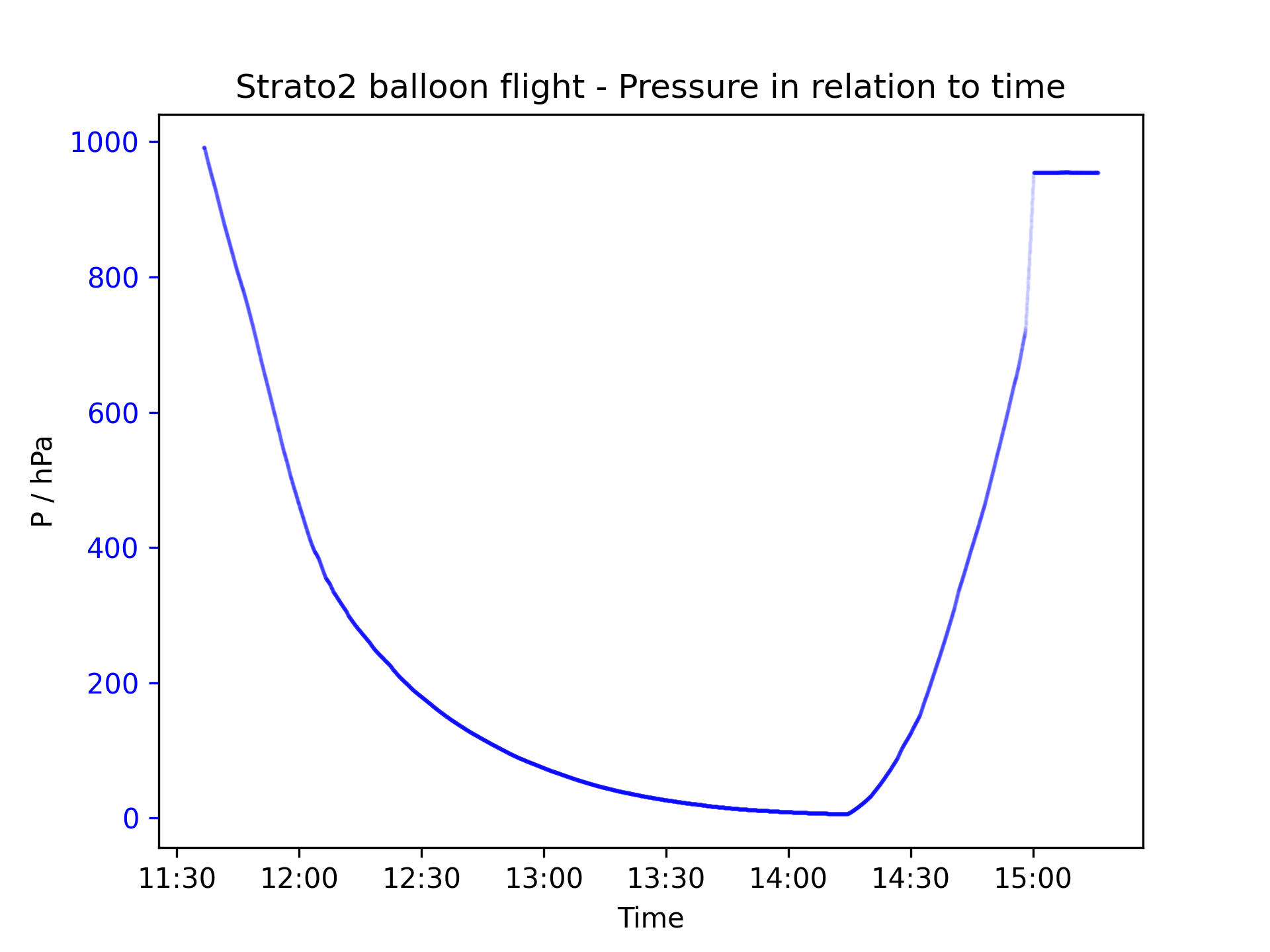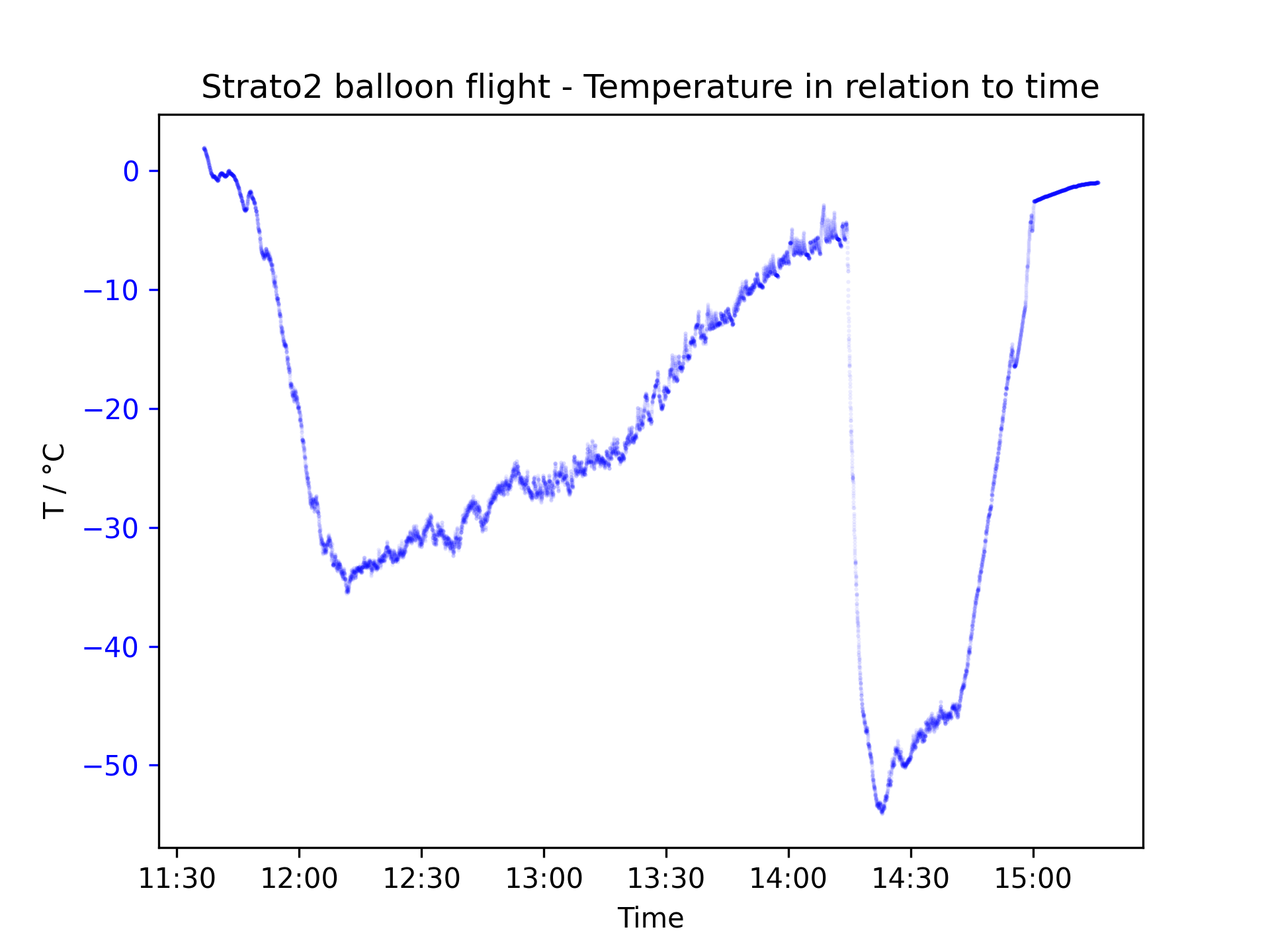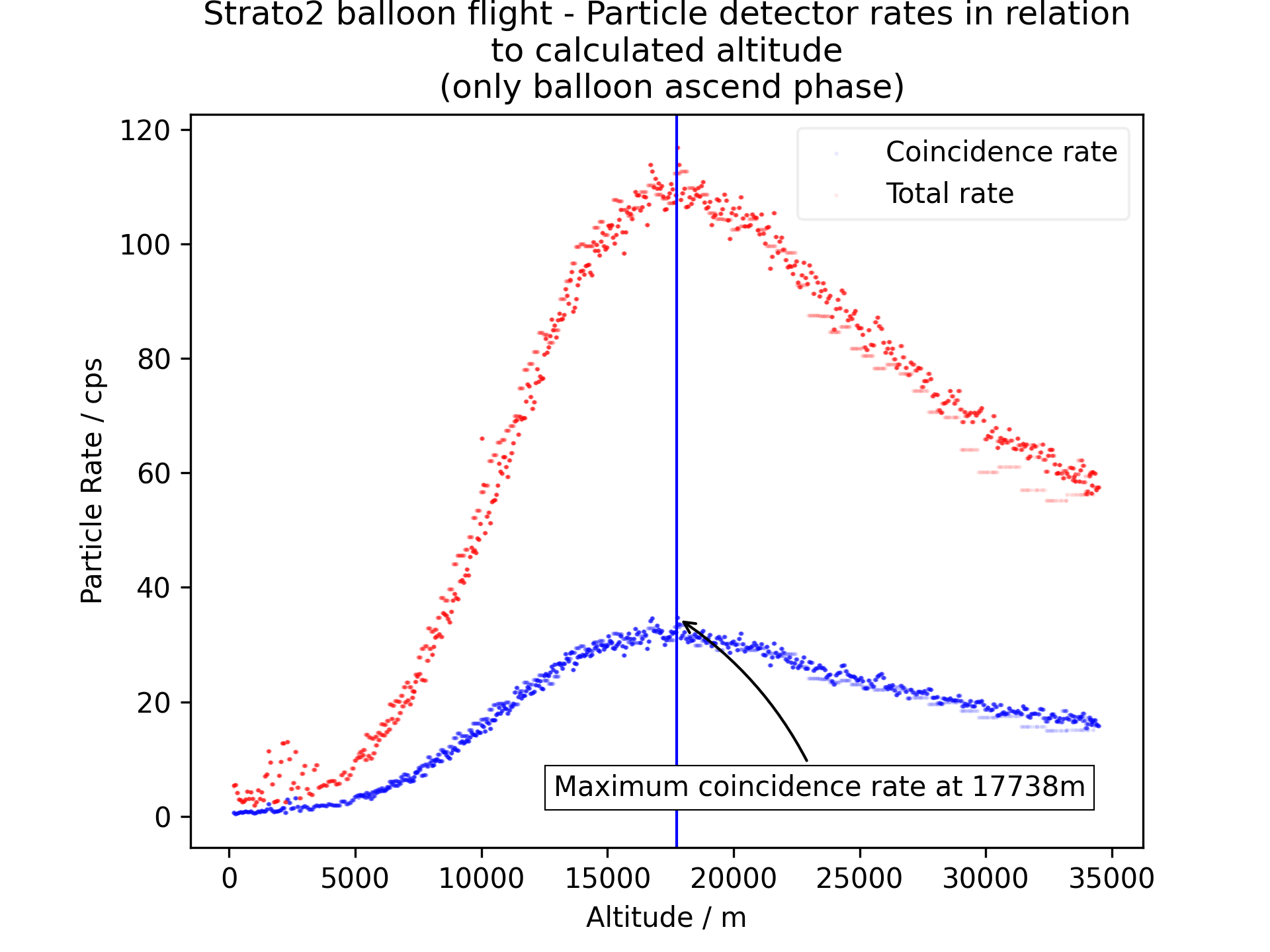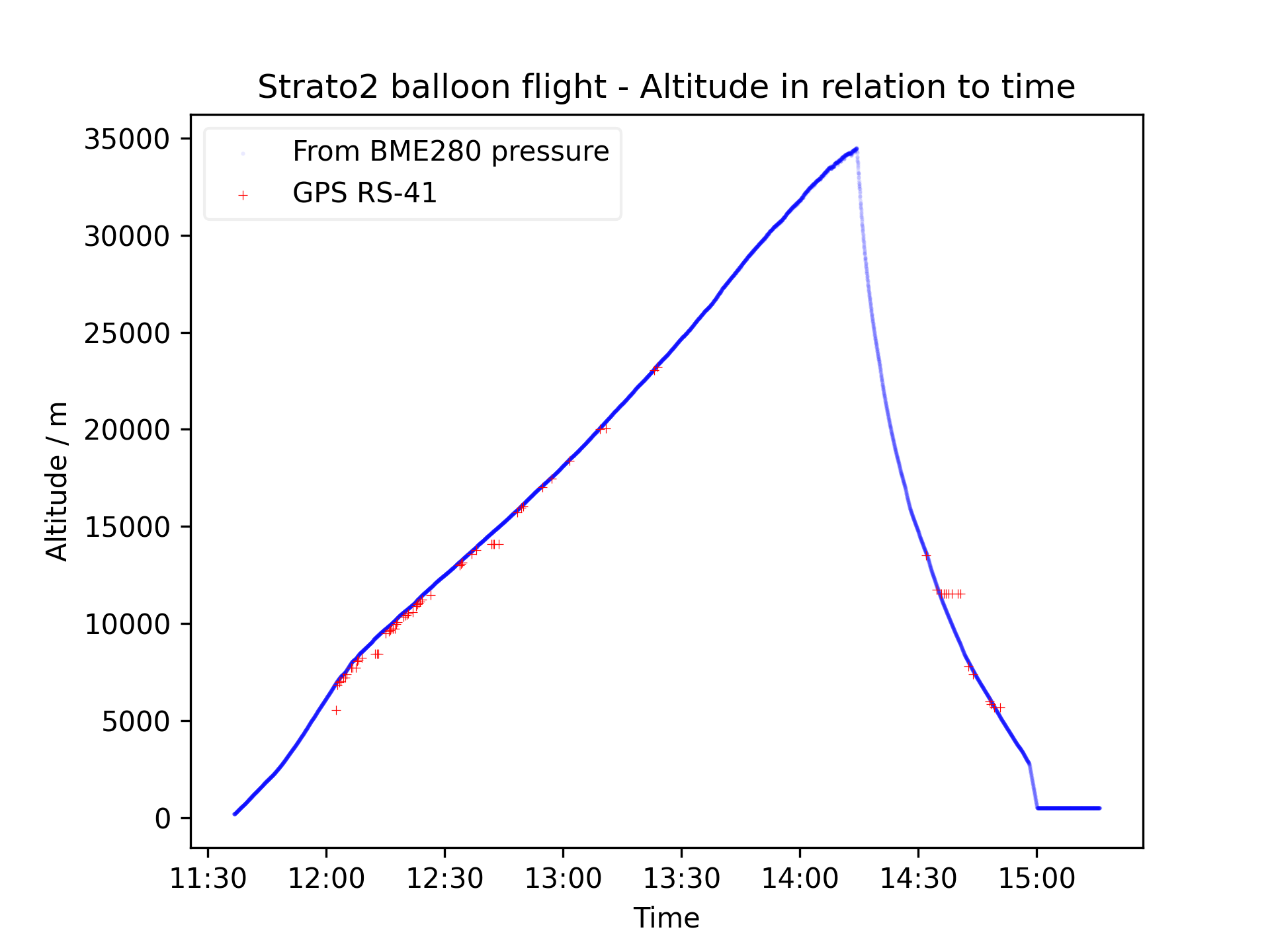On Saturday, November 19th, 2022, a team from the 2nd Institute of Physics of Justus-Liebig-University in Giessen successfully launched a stratospheric balloon with various scientific and didactic experiments on board. The probe, christened "STRATO-II", was launched on the campus for natural sciences in the presence of about 30 spectators (helpers, onlookers and interested parties) at 11:36 am local time. Telemetry data was received over multiple communication bands throughout the 3.5 hour flight time. The balloon rose to a maximum altitude of 34,800 m before its envelope burst under the low ambient pressure in the stratosphere of just 6 mBar and the payload with the experiments fell back to earth. The landing, which was predicted to be near Coburg in Franconia, actually took place a little further east at the "border triangle" between Bavaria, Thuringia and Saxony. An accompanying GPS tracker finally reported the landing coordinates via a mobile internet connection, so that the next day a local radio amateur could collect the payload in the form of a styrofoam capsule and thankfully send it back to Giessen.
The call sign DN5FCG, which is required for the issuance of the flight permit, was kindly made available to us by W. Senger, a former JLU employee. Under this callsign the flight path of the probe can be traced on the typical probe trackers, such as https://aprs.fi. From the measurement data transmitted and also written to on-board memory card, a profile of the cosmic radiation in the different layers of the atmosphere could be determined, among other things. Telemetry was transmitted by two independent systems. First, a recycled and reprogramed RS-41 probe, which is frequently used by the german weather service, sent regular APRS packages on 431 MHz containing GPS data and temperature. A further system was making use of the modern LORA modulation method providing a long range communication with extremely low transmission power (~50mW). The now ubiquitous network of LORAWan ground gateway stations guaranteed the reception of the weak signal from the probe and making the messages available to the internet via The Things Network (TTN). It turned out, that at maximum altitude (34.8 km), several dozens of ground stations were still able to relay the signals with sufficient SNR. The LORAWan messages contained more detailed data, i.e. air temperature and pressure, particle rates from a MuonPi detector with a double scintillator setup (single hit rate, coincidence rate) and battery voltage.

Unfortunately the GPS module on the MuonPi board did not receive valid GPS information during the flight so the altitude was calculated from the pressure measurements utilizing the BME280 sensor from Bosch Sensortec. For this calculation the US standard atmosphere (1976), a static model of the earths atmosphere, was used and the results were correlated with the altitude data from the GPS of the RS-41 probe. Analysis of the telemetry data shows a peak in measured particle rate at an altitude of approximately 17,7 kilometers (Regener-Pfotzer Maximum). This behaviour is expected and the shape of the curve fits well with previous experiments although the exact altitude of the peak depends on many factors like for example solar activity.



